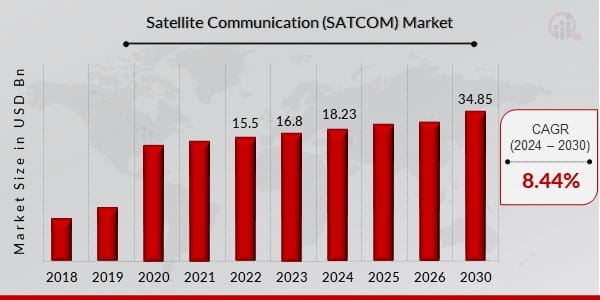Satellite Communication Market Revenue Analysis: Projected Growth and Key Revenue Streams by 2030

The Satellite Communication Market Revenue continues to rise, driven by the deployment of Geostationary Orbit (GEO) Satellites, broadband demand, and enterprise applications. Revenue growth is fueled by private sector investments, government programs, and technological advancements.
Breakdown by satellite type shows significant contribution from HTS, LEO, and GEO satellites. Revenue streams include satellite services, equipment sales, and solution integration.
According to MRFR Analysis, the Space Situational Awareness (SSA) Market is projected to reach USD 2.01 Billion by 2032, growing at a CAGR of 7% between 2024 and 2032. The market’s growth has been fueled by the surge in satellite deployments for both civil and military applications, which enhances the monitoring of outer space and its effects on Earth.
The SSA sector plays a critical role in tracking space conditions, celestial events, and potential hazards such as space debris. While the COVID-19 pandemic temporarily slowed market expansion, the sector has rebounded thanks to increased satellite manufacturing and international collaboration. Key growth drivers include the rising demand for space-based sensing activities and the cost-effectiveness of small satellite operations. However, regulatory hurdles and the growing threat of orbital debris remain significant challenges for the industry.
As satellite communication becomes more essential for global connectivity, revenue is expected to expand further, offering opportunities for service providers, manufacturers, and technology innovators worldwide.

Comments ()